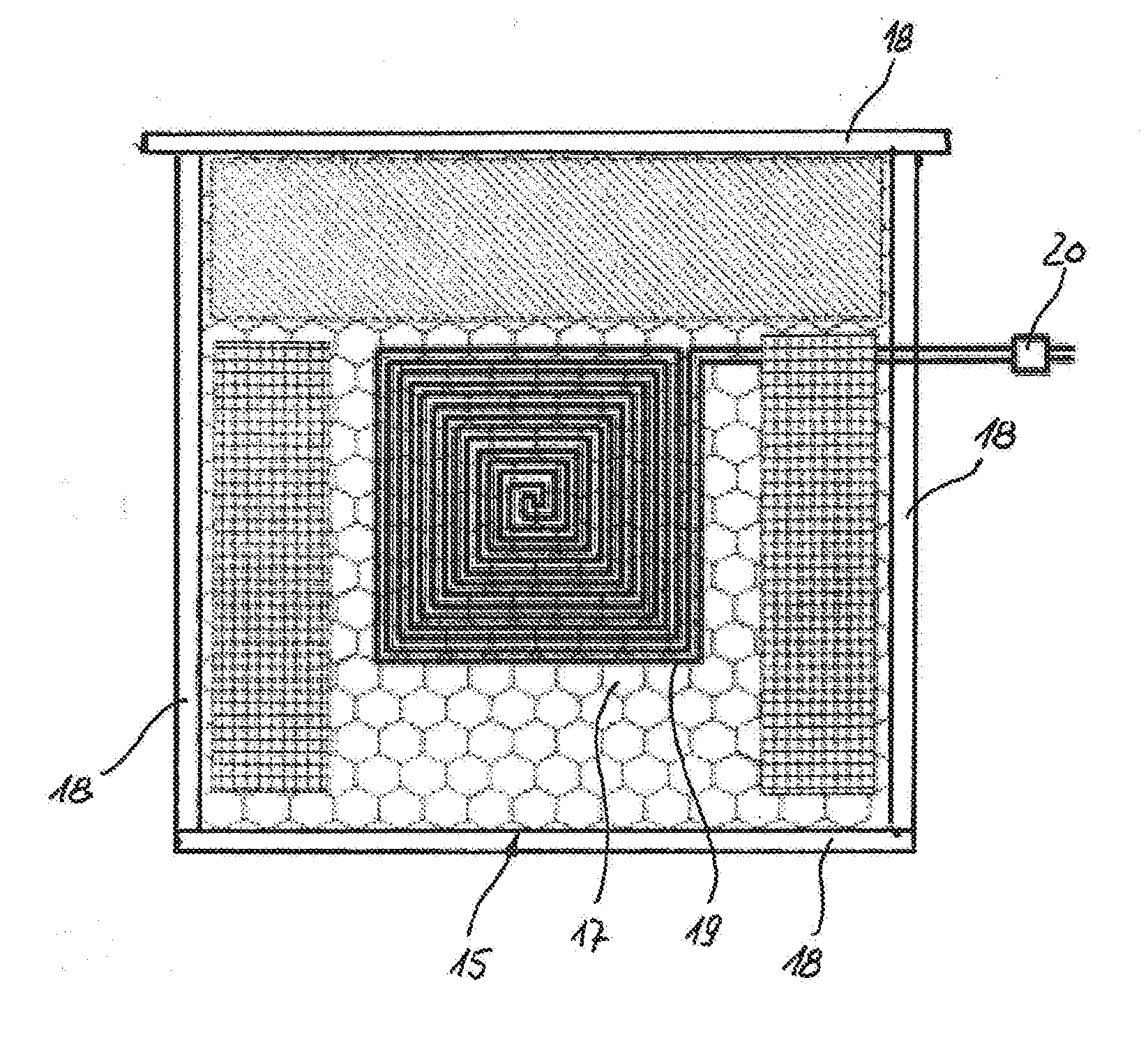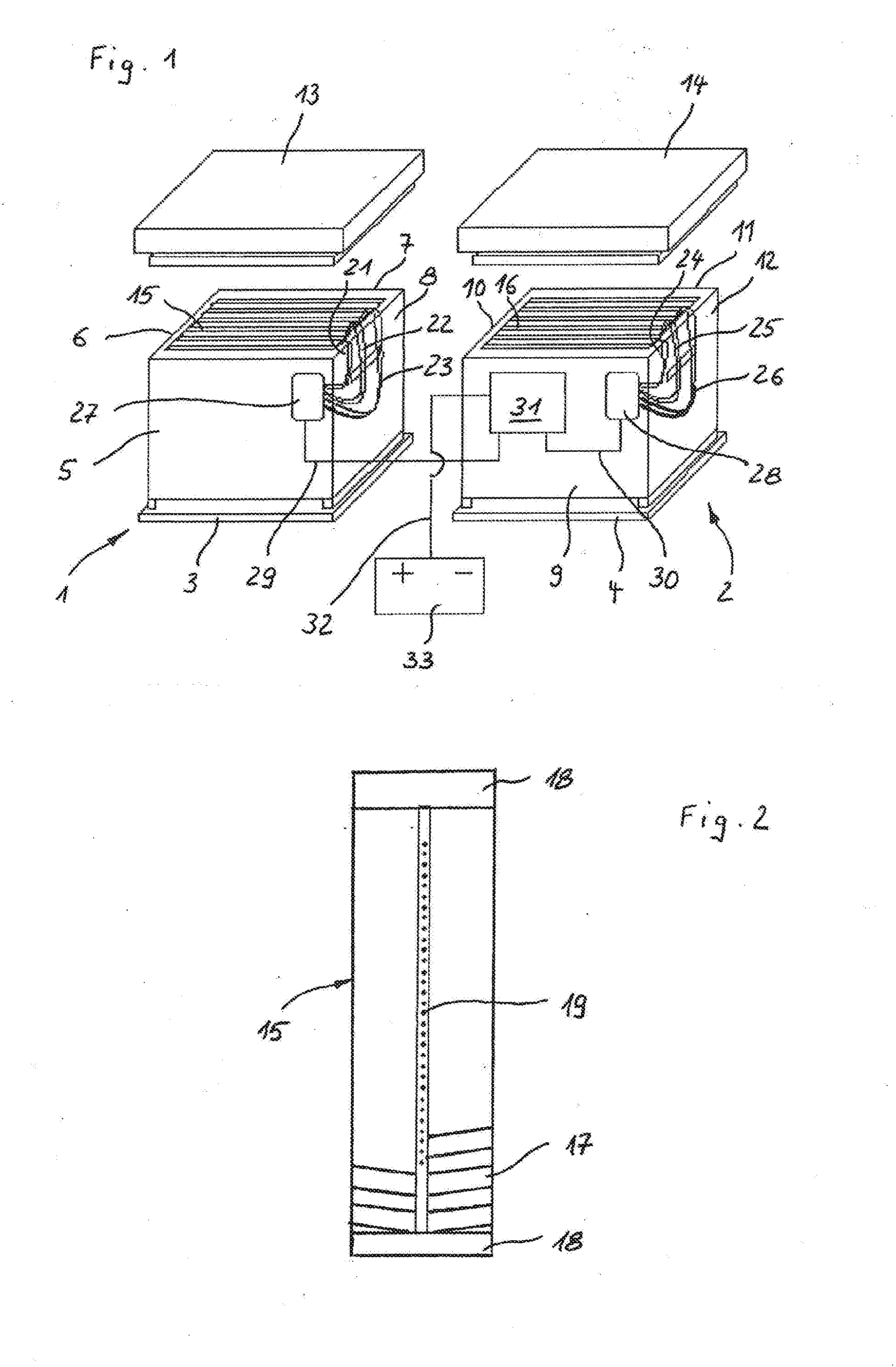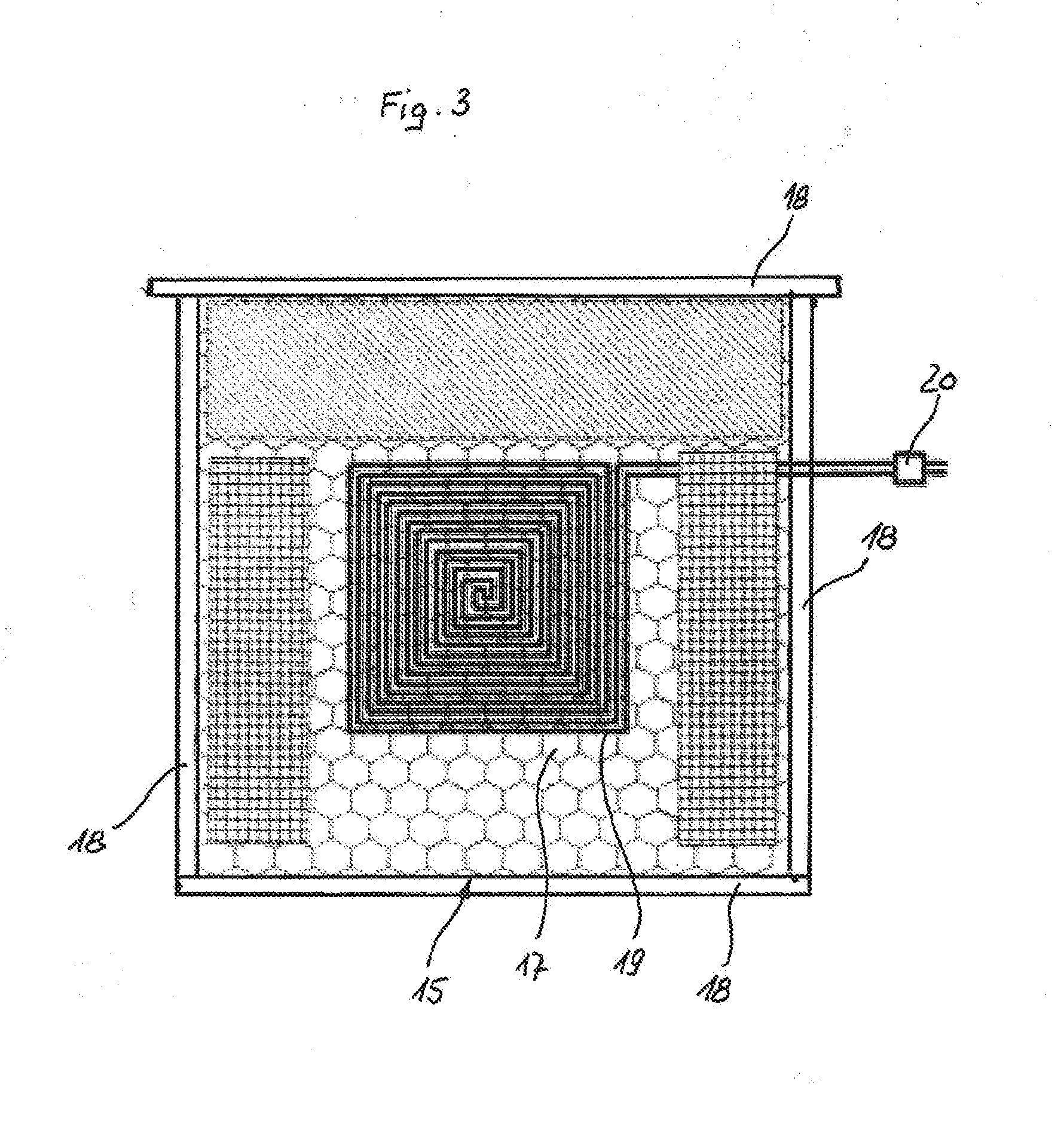Device for combating the varroa mite in a bee brood
a technology for bees and mites, applied in applications, beehives, apiculture, etc., to achieve the effect of improving the protection of the bee colony and being easy to handl
- Summary
- Abstract
- Description
- Claims
- Application Information
AI Technical Summary
Benefits of technology
Problems solved by technology
Method used
Image
Examples
Embodiment Construction
)
[0027]In FIG. 1 two substantially cubical beehives 1, 2 are shown next to one another. They each have a bottom wall 3 or 4 and four side walls 5, 6, 7, 8 or 9, 10, 11, 12 arranged at right angles to one another. Each of the beehives 1, 2 has a removeable top wall 13 or 14 which are shown here in the vertically lifted off state.
[0028]Suspended in each of the beehives 1, 2 is a plurality of middle walls—identified, for example, by 15 and 16—, that extend vertically and parallel to the side walls 5, 7 and 9, 11. Some of the middle walls 15, 16 are formed as shown in FIGS. 2 and 3.
[0029]The middle wall 15 shown in FIGS. 2 and 3 is made of wax and is provided on both sides with hexagonal brood cells, also formed from wax—identified, for example, by 17—that are largely configured as brood cells 17 for female bees and only parts of which are drawn in FIG. 2. The middle wall 15—like all of the other middle walls 15, 16—is surrounded by a frame 18 by means of which the middle wall 15 can be...
PUM
 Login to View More
Login to View More Abstract
Description
Claims
Application Information
 Login to View More
Login to View More - R&D
- Intellectual Property
- Life Sciences
- Materials
- Tech Scout
- Unparalleled Data Quality
- Higher Quality Content
- 60% Fewer Hallucinations
Browse by: Latest US Patents, China's latest patents, Technical Efficacy Thesaurus, Application Domain, Technology Topic, Popular Technical Reports.
© 2025 PatSnap. All rights reserved.Legal|Privacy policy|Modern Slavery Act Transparency Statement|Sitemap|About US| Contact US: help@patsnap.com



